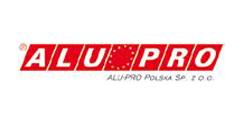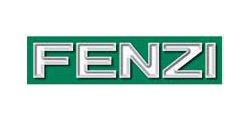It is noteworthy that about 10% of hospital patients get sicker during their stay after coming into contact with germ-laden equipment and surfaces, resulting in about 100 000 deaths each year in the U.S. and more than $20 billion in added healthcare costs. This fact attracts the growing attention of the industry to develop antimicrobial coatings protecting from cross-infections1.

Being aware of this data, DAGLASS offers antimicrobial coatings called NANO-BARREN™ with permanently implemented antimicrobial agents ensuring long-term antimicrobial function. DAGLASS technology enables obtaining nanolayers with bacteriostatic/bactericidal and fungistatic/fungicidal function on any kind of surfaces: vitreous, ceramics and plastics supporting standard disinfection procedures.
Many competitive solutions such as quaternary ammonium compounds or organosilanes exhibit a limited antimicrobial activity or need UV light to activate (nanolayers with titanium dioxide)2. For instance, coatings based on quaternary ammonium compounds need re-application each 3-4 months3. NANO-BARREN™ has a few advantages in comparison with other techniques.
First of all, antimicrobial nanolayers work in the dark conditions without the necessity of utilizing UV light undesired in hospitals. Secondly, the bacteriostatic/antimicrobial effect may be enhanced through visible light for coatings with metal doped titanium dioxide. Thirdly, this functional coating is performed by means of magnetron sputtering technique, which enables obtaining nanolayers with strictly defined thickness.

Moreover, this solution does not contain silver compounds, what increases health safety of patients and coatings` durability. This is very important since it is known that biosafety of silver containing coatings is questionable4. Such nanolayers exhibit a very good optical appearance, adhesion to the surface and long-term stability in comparison with common sol-gel technique 5,6.
Features mentioned above make NANO-BARREN™ coating highly competetive in comparison with other products available on the market. Additionally, a high antiviral potential due to the presence of some metal compounds is a specific feature of this layer.

An antimicrobial function of NANO-BARREN™ coating against typical medical bacterial strains was confirmed by external laboratories with the following R values: 4.72 against Pseudomonas aeruginosa, 4.11 against Salmonella typhimurium and 3.62 against Staphylococcus aureus MRSA (measured according to the norm ISO 22196:2011 Measurement of antimicrobial activity on plastics and other non-porous surfaces).
Such a broad spectrum of antimicrobial action opens the possibility for NANO-BARREN™ coatings to be utilized in any kind of medical applications; sanitary glass for hospitals, glass racks, shelves, etc.)7,8. In 2020 NANO-BARRENTM coating received a hygienic certificate from the National Institute of Public Health for usage not only in hospitals but in any kind of public buildings as kindergartens, public offices, clinics, etc.
Source: daglass.pl
1 Cross-infections – transfer of harmful microorganisms between people, pieces of equipment, or within the body in the hospital environment.
2 Chung CJ et al. An antimicrobial TiO2 coating for reducing hospital-acquired infection. J Biomed Mater Res B Appl Biomater. Apr; 85(1),220-4. 2008
3 Tamimi et al. Long-term efficacy of a self-disinfecting coating in an intensive care unit American Journal of Infection Control 42, 1178-81, 2014
4 Knetsch et al. New Strategies in the Development of Antimicrobial Coatings: The Example of Increasing Usage of Silver and Silver Nanoparticles Polymers 3, 340-366, 2011
5 Kiran Gupta et al. Photocatalytic antimicrobial performance of TiO2 and Ag-doped TiO2 against S. aureus. P. aeruginosa and E. coli Beilstein J. Nanotechnol., 4, 345–351, 2013
6 Yu et al., Synthesis of Ag–TiO2 composite nano thin film for antimicrobial application, Nanotechnology 22, 115603 (9pp), 2011
7 Kiran Gupta et al. Photocatalytic antimicrobial performance of TiO2 and Ag-doped TiO2 against S. aureus. P. aeruginosa and E. coli Beilstein J. Nanotechnol., 4, 345–351, 2013
8 A.L. Caseya et al. Role of copper in reducing hospital environment contamination, Journal of Hospital Infection, 74 (1), 72-7, 2010
Całość artykułu w wydaniu drukowanym i elektronicznym
Inne artykuły o podobnej tematyce patrz Serwisy Tematyczne
Więcej informacji: Świat Szkła 9/2021


































